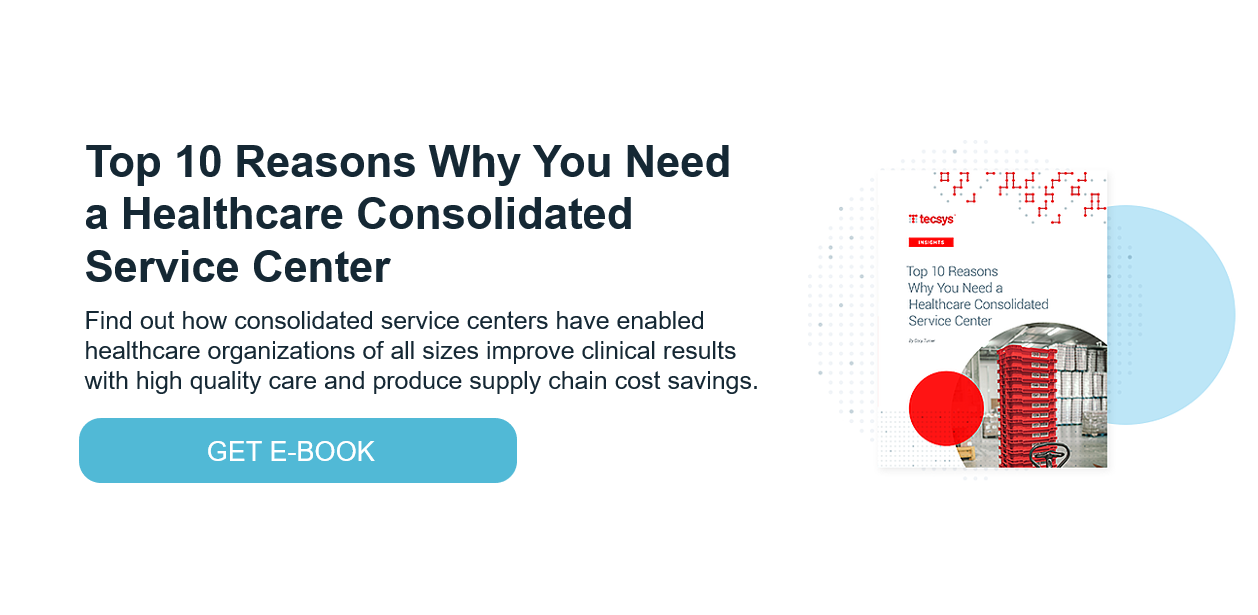The Evolution of Healthcare Distribution: 2021 Brings Swift and Strategic Change

While the COVID-19 pandemic presented healthcare distribution gaps never before experienced in the industry, there is some sense of relief among supply chain leaders as they right the ship and charter a more strategic course in 2021.
In years past, supply chain teams typically had the time and resources to address one challenge at a time. With the pandemic revealing how multiple areas of supply chain weakness added up to a catastrophic breakdown, supply chain leaders are focusing more on efforts that will improve operations as a whole.
3 Key Focus Areas for Healthcare Distribution Moving Forward
1. Gain Visibility of Inventory
A key reason why health systems suffered supply shortages during the pandemic was a lack of visibility. Disconnected systems between supply chain and clinical operations, hospitals and non-acute sites, and medical/surgical and pharmaceutical supply chains all prevented supply chain leaders from seeing the bigger picture for strategic, enterprise-wide decision-making.
An effective supply chain operation is more than just knowing what supplies are on hand. Health systems must also know when, how and in what quantities they are used. While some believe all that is needed for supply management is a good enterprise resource planning (ERP) system, this is just one side of the equation. A health system needs a way to connect the ERP to the electronic health record (EHR) to get the complete picture.
Pharmaceuticals are another critical piece of the puzzle. As they are often managed in a separate system outside of the ERP, supply chain leaders generally lack visibility into their procurement, management and use.
Costs will continue to be a major consideration for health systems long after the pandemic ends. Improving supply chain management can help systems diminish their healthcare distribution expenses by an average of nearly 18%.
Presently, supply chain leaders are working to establish end-to-end, connected supply chain operations that provide global visibility into the entire life cycle of medical/surgical and pharmaceutical products — from order through to use on a patient.
2. Taking Control of Supplies
In 2021, health systems are increasingly turning away from supply chains wholly reliant on vendors and distributors. More organizations are examining how they can do it themselves and take the lead on their healthcare distribution. With a consolidated service center (CSC), a health system has the whole breadth of supply chain under its control.
Control over medical/surgical and pharmaceutical supply distribution throughout the continuum — from hospitals to home care — helps ensure each facility gets what it needs when it needs it. It is also easier to track supply ordering and usage and make informed decisions based on this data.
Because health systems with CSCs must still rely on suppliers to deliver the products they need, some are even setting up their own supply manufacturing operations. No doors are closed right now. Everything is open for discussion.
3. Leveraging Data and Analytics
A key benefit of increased supply chain connectedness, control and visibility is the resulting access to data on which to make strategic decisions. Coming out of the pandemic, supply chain leaders are implementing technology solutions with dashboards and analytics for proactive versus reactive decision-making.
With analytics on supply inventory and usage in near real time, supply chain leaders can more effectively manage supplies for reduced cost and waste. Most importantly, they can be alerted to potential supply chain disruptions that could jeopardize care delivery.
Even for those health systems that rely on healthcare distribution partners, data and analytics are critical to communicate what supplies are needed when, and to monitor distributor and supplier performance against set goals.
A Look Back – and Ahead
Historically, change in healthcare has been like turning a massive battleship — it has taken an abundance of time and effort. The pandemic has been a wake-up call to health systems that they have no time to waste. Change must now be swift, yet strategic.
After years of the healthcare supply chain function gradually evolving, working to earn a seat at the C-suite table, a switch was flipped in 2020 and everyone is now aware that supply chain leaders must take a bigger part in the future of healthcare distribution.
In order to do so, they need the visibility and control to fix existing breaks in the chain and data-driven insights to build a more resilient, flexible and adaptable model… one that is capable of weathering future disasters and disruptions.




